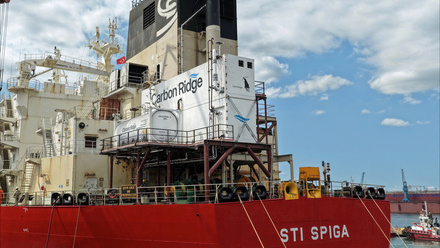Biofuels key to maritime decarbonisation
Emergence of bio-LNG and biomethanol part of a ‘holistic approach’ to decarbonisation according to new research.
Biofuels are expected to prove the primary decarbonisation solution for the merchant shipping sector over at least the next 15-20 years, according to a study prepared by a multinational stakeholder group.
Having last year signed an agreement to form a “global observatory” to monitor and assess decarbonisation solutions for the sector, global entities Eni (energy), Fincantieri (shipbuilding) and Registro Italiano Navale (certification) recently released their first outlook report, named ‘Sustainable Maritime Transport Outlook’.
The study, which was developed with the technical support of consultancy Bain & Company, “aims to contribute to accelerating” the decarbonisation of maritime transport in line with the IMO’s net zero target for 2050.
“The maritime industry is responsible for approximately 3% of global CO2 emissions and is committed to achieving carbon neutrality by 2050,” states the group.
“To reach this goal, a clear and realistic roadmap is essential – one that minimises uncertainty and risk for investors while offering practical, economically-viable solutions for the entire industry.
“Addressing this need through a holistic approach, the study provides, for the first time, a global overview of viable decarbonisation options tailored to different vessel segments and regions worldwide. It also integrates volume assessments with a comprehensive analysis of cost implications for shipowners and the investment requirements across the logistics and port infrastructure chain.”
50% of new ships ‘dual fuel’
Although traditional fuels still currently account for 93% of total energy consumption in the sector, the study notes the progressive movement towards alternative propulsion sources, as evidenced by about 50% of new ship orders in 2023 being of dual-fuel design.
“Between 2030 and 2040, Europe and North America are expected to see a major shift from fossil fuels to HVO [hydrotreated vegetable oil] biofuels – which will serve as the cornerstone of the transition – and to LNG, including its bio-derived form. HVO is already available at key ports and offers a degree of cost resilience, while LNG remains economically competitive in the near term, though it will face increasing regulatory penalties from 2040 onward.
“To achieve carbon neutrality by 2050, the industry will also need to explore new alternative fuels, such as synthetic fuels produced from green hydrogen. However, these are not expected to become cost-competitive with fossil fuels until after 2040.
“In the long term, biofuels derived from renewable feedstocks and synthetic fuels will be essential for decarbonising medium- and long-range merchant vessels. For short-range ships, bioenergy solutions will be sufficient.
“In the cruise segment, small to mid-sized vessels (luxury and exploration classes) are expected to adopt both HVO biofuels and synthetic fuels, while larger vessels (upper premium and contemporary classes) will rely more heavily on bioenergy sources such as HVO, bio-LNG and biomethanol.”
Others parties, including independent energy research company Rystad, point out that while biofuels are currently a good proposition, “global demand for biodiesel in shipping could exceed 140 million tonnes of fuel oil equivalent by 2028”.
“Taking into account production risks, actual output levels, and competition from other sectors, the volume of biofuels realistically available for shipping diminishes even further,” Rystad concludes.
Successfully managing this transition will also require significant long-term investment in port infrastructure to accommodate the supply and distribution of alternative fuels, observes the Eni, Fincantieri and RINA group.
“Within the European Union alone, investments of up to €24 billion are projected. In terms of infrastructure needs, HVO biofuels and LNG will require relatively-limited investment (around 15%), due to their compatibility with existing systems. In contrast, synthetic fuels will demand substantial investment (around 85%), as the necessary infrastructure has yet to be developed.”
Tell us what you think about this article by joining the discussion on IMarEST Connect.
Join IMarEST’s Ship Energy and Environmentâ¯Special Interest Group to discuss this and similar topics.
Image: bridge view of an LNG tanker. Credit: Shutterstock.






